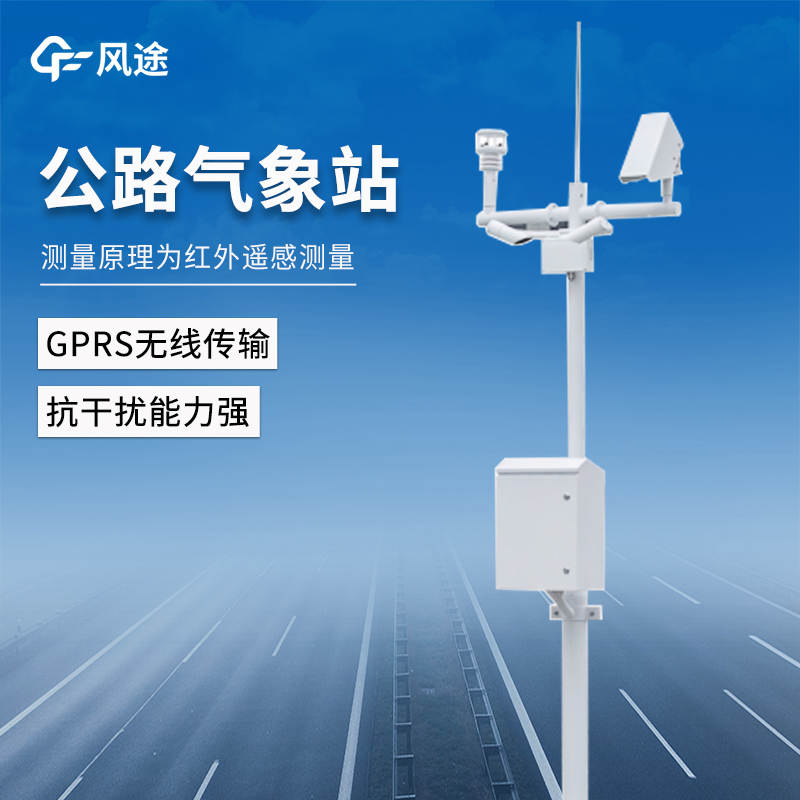Tianqiong Sensor IOT Technology Co., Ltd
Sales Manager:Ms. Emily Wang
Cel,Whatsapp,Wechat:+86 15898932201
Email:info@fengtutec.com
Add:No. 155 Optoelectronic Industry Accelerator, Gaoxin District, Weifang, Shandong, China

Sales Manager:Ms. Emily Wang
Cel,Whatsapp,Wechat:+86 15898932201
Email:info@fengtutec.com
Add:No. 155 Optoelectronic Industry Accelerator, Gaoxin District, Weifang, Shandong, China
time:2025-08-12 09:07:39 source:Weather Station viewed:255 time
Expressways, as the main arteries of transportation, are crucial for the movement of people and the transportation of goods. However, severe weather such as heavy rain, heavy snow, dense fog, and strong winds frequently disrupts the operation of expressways, posing challenges to traffic order and travel safety. To address these issues, the Road Weather Information System has become a solid line of defense for ensuring road safety.
The system consists of meteorological data collection equipment, a data transmission network, a data analysis and processing center, and an early warning information release platform. The meteorological data collection equipment, composed of various precision sensors, is installed in key areas along the expressway, such as bridge and tunnel entrances and exits, wind outlets, and sections prone to fog clusters. These sensors have clear divisions of labor and can accurately monitor meteorological elements such as temperature, humidity, rainfall, wind speed, wind direction, visibility, as well as road surface dryness, wetness, and icing conditions. For example, visibility sensors use optical principles to accurately obtain visibility values by measuring the scattering degree of light in the atmosphere; road condition sensors, on the other hand, use microwave detection technology to real-time measure whether there is water accumulation, icing, or snow cover on the road surface.
The collected meteorological data is transmitted to the data analysis and processing center in a high-speed and stable manner through the data transmission network. This network, like an information superhighway, guarantees the rapid and accurate transmission of data. The data analysis and processing center, as the "intelligent brain" of the system, uses complex algorithms and advanced models to conduct in-depth analysis of massive meteorological data. On the one hand, it compares real-time data with historical data and preset threshold data to determine whether the current meteorological conditions are severe and their degree; on the other hand, it uses numerical weather prediction technology and machine learning algorithms to predict the development trends of severe meteorological conditions, such as future changes in intensity, movement direction, and scope of influence.
When the system judges that severe weather is occurring or approaching, the early warning information release platform comes into play. This platform quickly transmits early warning information to expressway management departments, traffic police, road administration, and passing drivers through various channels such as variable message signs along the expressway, traffic radio, mobile phone short messages, and navigation APP prompts. Drivers can timely receive early warnings of severe weather on the road ahead through on-board navigation or mobile phone navigation APPs, thereby making preparations in advance such as slowing down and turning on fog lights; expressway management departments and traffic police, based on the early warning information, can deploy traffic control measures in advance, arrange snow and ice removal, drainage and other operations, and make every effort to ensure the safety and smooth flow of the road.

Currently, the situation of urban atmospheric pollution is becoming increasingly complex, and traditional methods for monitoring atmospheric pollution sources are facing numerous challenges. The existing national control monitoring system for ambient air has problems such as a small number of monito...
A farmland weather station is a specialized meteorological monitoring device designed specifically for agricultural production. Its core function is to collect, analyze, and transmit meteorological data in real time, providing a scientific basis for agricultural activities. The hardware includes var...
In the water conservancy and water services industry, water regime monitoring is a fundamental task. Especially during summer when natural disasters occur frequently, monitoring enables disaster prediction and provides data support for formulating flood prevention and relief plans. With the applicat...
ambient weather station handheld is a pocket-sized, multi-functional device specifically designed for emergency response. It can quickly and accurately acquire core meteorological data such as temperature, humidity, atmospheric pressure, wind speed, and wind direction, and integrates emergency functions such as SOS distress signals and navigation. Adaptable to harsh environments, it features a high-capacity battery and low power consumption design, ensuring continuous operation for extended periods....